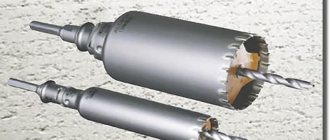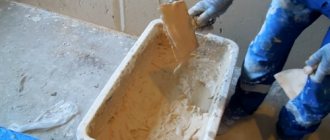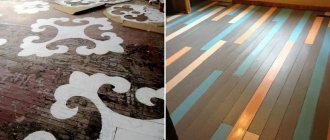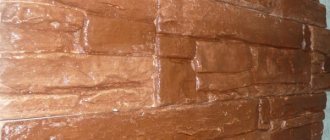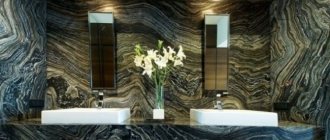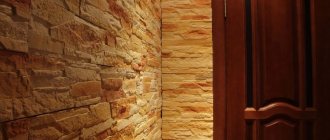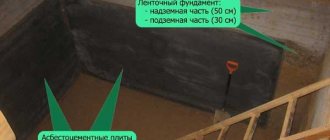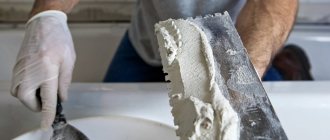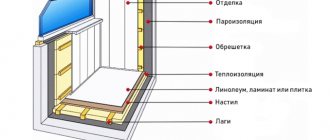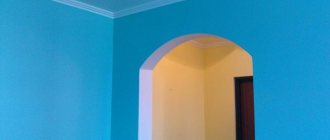Finishing corners with decorative stone is a difficult job. Some manufacturers offer special profile elements for finishing corners, but they are not available in all collections. Additional elements are expensive and do not always correspond to the consumer’s request. In addition, working with such parts requires certain skills. When planning to use decorative stone for cladding the facade of a building or for interior decoration, it is necessary to study in detail the technologies for finishing corners.
Order a ready-made monolithic corner for finishing and insulating the facade. All the details are here
Advantages of using decorative stone
Decorative stone is actively used in the decoration of buildings both outside and inside. The list of advantages of this material includes:
- large selection of textures and shades;
- high strength and wear resistance;
- long period of operation;
- no maintenance costs;
- attractive appearance;
- versatility of use;
- environmental and fire safety.
As a rule, stone is used to highlight individual architectural or interior elements. Textured material fits harmoniously into any design and allows you to give it individuality. The material is suitable for use both outside and inside residential premises: kitchen, hallway, living room, bathroom.
The active use of material for finishing external corners is practiced not only for aesthetic purposes. This is a great way to protect corners from mechanical damage. Stone finishing is resistant to abrasion and other external influences, durable and very practical.
The use of stone for wall cladding requires proper design of both external and internal corners. The use of special corners made of metal or plastic is not the best solution, since it visually devalues the stone cladding. A more refined and organic solution would be the use of stone parts. But even primitively applied end-to-end tiles on the outer corners will not achieve the desired result.
What are decorative corners for?
Corners are most often “touched” by people passing by with their shoulders, elbows and carried objects. Accordingly, it is this part of the wall that is erased and scratched more than the remaining ones. To protect the joint from mechanical stress, a decorative corner is attached to it - a special type of finishing materials, a special “overlay”. It is designed to perform two functions:
- Decorate the finish;
- Protect the sensitive area.
In addition, finishing using these elements looks neater and the interior seems complete. Using the material, color and size, you can emphasize the features of the style used in the design of the room.
Corner finishing options
There are two current technologies for finishing internal and external corners using decorative stone.
- The first option involves cutting out parts of the required size from individual tiles.
- Purchase of ready-made corner elements of the required profile.
It should be noted that the use of ready-made corner parts made of decorative stone will significantly increase the cost of purchasing the material. But the visual effect will be richer and more refined. This technology is appropriate for both facade and interior work.
The use of ready-made corner parts made of stone eliminates the formation of seams in the most problematic areas. This has a positive effect on the service life of the cladding, since the ends of the tiles will be protected from direct impact.
The technology for trimming individual parts involves two methods:
- Individual stone tiles can be overlapped by cutting them to size. But at the same time the ends will remain open, and this is not very aesthetically pleasing. In addition, such a cladding scheme negatively affects the service life of the finish.
- It is possible to cut the ends at an angle of 45 degrees for a tight fit of adjacent elements at the junction. An excellent result is guaranteed only if the cuts are made carefully. To do this, it is recommended to use an electric tile cutter. If necessary, you can trim the cut using a file or sandpaper.
Example House Facade Decor
In this case, the main distinguishing feature of this composition is the massive, volumetric frame of the windows. The under-roof cornice is made of two separate elements. mounted at a distance from each other. The gap between the top. The main cornice and smaller strip on the wall are painted in the color of the decor, which visually gives a single composition.
Exterior window design
The windows of the first and second floors are finished with small moldings along the perimeter. Moreover, a figured frame is created from it into which the brackets are inscribed. On the first floor, a straight top window with a large profile was added. In addition to this, there is an arched element on the second floor.
Decorating the corners of the house with polystyrene foam
The corners of the house are decorated with rusticated simple rectangular shapes of the same size. Such execution is usually carried out by façade workers on site or from a molded product.
Dividing, interfloor strip
There is a voluminous, protruding dividing strip between the floors. Its dimensions and volume create additional relief on the facade of the house.
Finishing the basement of the house
The plinth element is located with the thin part up to smooth out the difference in thickness of the plinth and the main wall.
Wall finishing materials
The main wall decoration is bark beetle or decorative plaster. The finishing coating of the walls is applied after the installation of decorative stucco. This helps to further isolate the joint where the decorative elements are glued to the wall. The basement part is decorated with marble or granite.
FACADE DECOR FROM THE MANUFACTURER
WINDOW MOLDINGS COLUMN
DECORATIVE WINDOW SILLS PILASTERS
CORNICES PATTERNS, ORNAMENTS
Selection of finishing material
Cladding buildings inside and out with decorative stone has recently become very popular due to the excellent aesthetic and performance characteristics of the material.
Manufacturers offer a huge range of decorative stone cladding, taking into account consumer requests. When choosing, it is important to consider:
- texture;
- appointment;
- size;
- origin;
- technical characteristics of the material.
Based on their origin, two types of stone can be distinguished:
- natural (natural);
- artificial material.
The first group includes marble, granite, dolomite, quartzite, sandstone, limestone and other stones of natural origin, processed to give them the correct shape.
The list of artificial finishes includes blocks, panels and tiles made of cement, gypsum, porcelain stoneware, and flexible products.
Experts recommend using artificial stone for interior decoration due to its relatively low dead weight. In addition, this type of cladding is easier to maintain because it has a smoother surface.
Important! Stone of natural origin is resistant to aggressive environmental influences. This makes it an ideal material for decorating facades and basements of buildings.
The finishing is selected taking into account the general style and color scheme of the facade or interior of the room. Experienced designers recommend moderation, since the abundance of stone visually weighs down the interior.
Types of cladding. Selection of colors and textures
Decorating the hallway with massive decorative stone in combination with wallpaper in contrasting colors or matching colors is one of the unusual ways of decorating. This material, which is similar in appearance to natural material, can also emphasize the natural texture of wood and highlight the nobility and beauty of the fabric. It goes perfectly with modern types of suspended ceilings. This material looks very impressive next to climbing green plants, as well as mirrors.
Note that decorative stone is used more often only for placing accents - framing corners, door and window openings, protrusions, and individual interior elements. It makes sense to completely cover the wall with it only in spacious rooms with high ceilings. But even in this case, it is better to cover one of the walls.
Plaster and marble are often used to decorate rooms in a classical style. Sandstone and granite are more suitable for decorating hallways in chalet or rustic country styles. Imitation of brickwork will look more appropriate in rooms decorated in minimalist or loft styles.
Coloring individual elements
If desired, individual elements can be painted with special coloring compounds. To add volume, the contours can be highlighted with darker paint.
Features of different types of decorative stone
Depending on the type of decorative stone, different techniques are used when laying it and finishing corners:
- In relation to natural materials, the optimal solution is to select ready-made profile elements of the desired geometric shape or trim the ends at an angle of 45 degrees. When the elements fit tightly together, the outer layer looks like a single monolith. However, this result can only be achieved with very careful pruning.
- Artificial materials have a budget price, which makes it easy to purchase profile parts for finishing corners. You need to know that working with such details has its own subtleties. Careful leveling of the walls and uniform distribution of the solution on the surface of the parts during installation will be required to avoid voids.
- Flexible stone of artificial origin will allow you to create corners of any configuration. The disadvantages of this material include lower strength and wear resistance than its solid counterparts.
Most often, artificial elements made of plaster or concrete are used for interior decoration. Gypsum is lightweight, but requires an additional varnish coating to protect it from moisture. It is easier to work with these types of decorative stones, since they are better susceptible to mechanical stress.
How to lay decorative stone
When planning to carry out finishing work yourself, it is necessary to study in detail their main technological stages.
The first step is to prepare the wall surface. You need to get rid of the old coating, level the surface, cover up chips and cracks, apply a layer of plaster if necessary, then saturate the wall with a primer. It is important to know that the wall surface must dry before finishing work begins.
At the next stage, it is necessary to prepare all materials and tools. The following can be used as a fixing composition:
- specialized mixtures for stone;
- adhesive solutions for tiles;
- liquid nails;
- silicone.
Experts allow the use of a regular mixture of cement and sand, but with the addition of a plasticizer. Most often, PVA glue is added to the working solution; this ensures excellent adhesion of the decorative stone to the base.
High-quality finishing of walls and corners requires thorough cleaning of the working surface from the previous coating. Decorative stone, especially of natural origin, has a lot of weight. The old layer of plaster may simply not withstand this weight. As a result, the cladding will collapse along with the base, and you will need to start working again.
Before starting work, it is necessary to lay out the finishing elements, evaluate their shade and surface texture. If several packages of decorative stone are purchased for finishing, there may be a slight difference in shades. It’s easy to solve the problem by mixing elements from different packs.
After the surfaces of the walls and corners prepared for work have dried, it is necessary to prepare a working adhesive solution. The mixture should be homogeneous, without lumps. It is convenient to stir the mixture using a special construction mixer (attachment to a drill).
The corners of the house are made of artificial stone. Making a stone with your own hands
It is easy to buy artificial stone on the construction market.
But real design solutions are achieved when a unique material is used. It is relatively easy to make decorative stone for interior decoration with your own hands. This will require pouring formwork. You can buy a ready-made silicone mold, but you can get a more interesting option if you use your own mold. To make it, just select a few stones of interesting shape. Place on the bottom of a suitable sized box, in accordance with the chosen pattern. Before installation, they must be lubricated with grease or other similar lubricant.
The mold is filled with silicone, compacted with a regular paint brush. The brush should be moistened with soapy water. Let it dry. After about two to three weeks, the stones are carefully removed from the formwork. If minor defects are detected, they are sealed with the same silicone. The form is ready to use.
Gypsum base
The easiest option is to use gypsum for the base of the future stone.
Before using the mold, it should be lubricated with oil, then the finished material will be easily removed. Gypsum diluted with water has very high plasticity and fills all the elements of the mold well. Just keep in mind that it hardens very quickly and you need to dilute the amount required to fill only one mold. To increase the setting time of the gypsum, citric acid can be added to the mixture.
It takes less than an hour for the stone to harden. After that it can be used. The technology for decorating walls with decorative gypsum stone is very simple. But it is worth noting that, unfortunately, this is a fragile material.
Manufacturing from cement
To make a more durable material, you can use a cement-sand mixture. Ratio 1:3. Add enough water so that when stirred, a homogeneous mixture is obtained, the thickness of which resembles sour cream.
The resulting mixture is poured into the mold, filling approximately halfway. Tapping and shaking, compact and place a metal mesh on top. The latter is needed to give the stone additional fracture strength. The second part of the solution is poured onto the mesh until the formwork is completely filled. While the solution has not hardened, but has already lost its plasticity, grooves are made along the upper surface. This is necessary for better adhesion of the stone to the surface during installation.
The stone is removed from the mold after 12 hours and allowed to gain strength within two weeks. The mold is washed with soapy water after each pour, immediately after removing the stone. Then it can be used repeatedly.
Coloring of finishing material
It is better to add the dye while preparing the potting mixture. It works out well if the stones are painted after production. This is a more complex process, but allows you to get an interesting design. Such an artificial stone on the wall will look very original.
The described option for manufacturing artificial material is not the only one, but it is the simplest. This way you can make decorative stones of the desired shape to decorate your home.
Operating procedure
It is important to know that cladding must always begin with the design of the corners. It does not matter what technology will be used to finish them.
If factory profile parts are used, they can be immediately attached to the wall. If it is necessary to trim the end parts, you should take careful measurements, then trim the number of tiles needed to finish the corner.
The parts are attached to a uniform layer of working mortar, the thickness of which should not be more than 1 cm. Each part is covered on the reverse side with a layer of mortar (or adhesive mixture), then gently pressed against the wall surface. It is recommended to remove excess working solution from the surface of parts and from seams immediately.
Important! The seams are filled with the mixture through a special syringe for construction mixtures. This must be done within 24 hours after finishing the corners and walls.
Example House Facade Decor
In this fragment of architectural decoration of the facade of a private house, the under-roof space is also filled with a combination of two separate stucco elements. The height of the composition is greater than its overhang on the roof, which gives a strong effect that lowers the overall height of the house.
Facade stucco molding for windows
The second floor windows are framed by two separate moldings. There is a flat profile along the edge of the slope, with a symmetrical convex element around it. Brackets are embedded into the outer window molding to support the massive top of the window. The profile of the top of the window is made with a bevel, which makes it possible not to cover it with additional metal. The windows of the first floor are complemented by a window sill profile and a figured top with an angular trim.
Decorating the corner of the house
The corners of the house are decorated with rustications of different sizes with chamfers on four sides. Rusts are located at a short distance from the corner.
Interfloor separation
In this example, one strip goes along the line of the window sills of the second floor, and the other along the floor slab of the first and second floors. This technique helps to significantly reduce the visual height of the building.
Finishing the basement of the house
The plinth element is located with the thin part up to smooth out the difference in thickness of the plinth and the main wall.
Wall finishing materials
The main wall decoration is bark beetle or decorative plaster. The finishing coating of the walls is applied after the installation of decorative stucco. This helps to further isolate the joint where the decorative elements are glued to the wall. The basement part is decorated with marble or granite.
Useful tips
Finishing corners with decorative stone requires care and precision. It is necessary to constantly monitor the uniform placement of parts and check the seams, otherwise distortion cannot be avoided.
It will be easier to level the surface of individual tiles at the corners if you prepare a solution of the correct consistency. It should not be too liquid, otherwise the tiles will begin to move. A thick mixture will prevent the parts from moving during the alignment process.
The use of decorative finishes of natural origin involves the use of high-quality fixing mixtures recommended by the manufacturer. Equally important is the quality preparation of the foundation.
Finishing corners is the most difficult stage in working with decorative stone. High-quality preparation of the working surface, the use of working solutions with the appropriate technical characteristics, attention and accuracy will help to successfully cope with the task.
Example House Facade Decor
In this set of facade decor for a private house, the roof overhang is also decorated with a combination of two separate stucco elements. The cross-section of the elements has a greater number of bends and steps compared to the previous version.
Decorative finishing of windows outside
The windows of the second and first floors are decorated with large moldings along the perimeter. The cross section of the molding has a pronounced, convex, rounded shape. The top of the window is mounted at a distance from the molding and is supported by decorative brackets.
Finishing the corners of the house facade
The corners of the house are decorated with pilasters of relatively small width along the facade. Each element is located a short distance from the corner of the house.
Dividing, interfloor strip
In the interfloor division, two separate elements are used, between which there is a strip of architectural ornament. The upper dividing strip runs along the bottom line of the second floor windows. The lower strip runs along the floor slab.
Finishing the foundation of the house
In this case, the compositional design of the basement of the house includes the strip running along the bottom line of the first floor windows. This option looks advantageous in the presence of so-called French windows - when the bottom of the windows is not located high from the floor. The plinth element is located with the thin part up to smooth out the difference in thickness of the plinth and the main wall.
Wall finishing materials
The main wall decoration is bark beetle or decorative plaster. The finishing coating of the walls is applied after the installation of decorative stucco. This helps to further isolate the joint where the decorative elements are glued to the wall. The basement part is decorated with marble or granite.
